I spy with my little eye… amazing animals at the Jersey Shore!
Summer is a great time to get out of the house and go on an adventure. For the animal lover, there’s no shortage of wild critters to spot when visiting New Jersey’s beaches, bays and estuaries this summer—you just have to look hard enough.
Here are some tips on how to spot the many fascinating beasts who call New Jersey home.
1. Humpback Whale
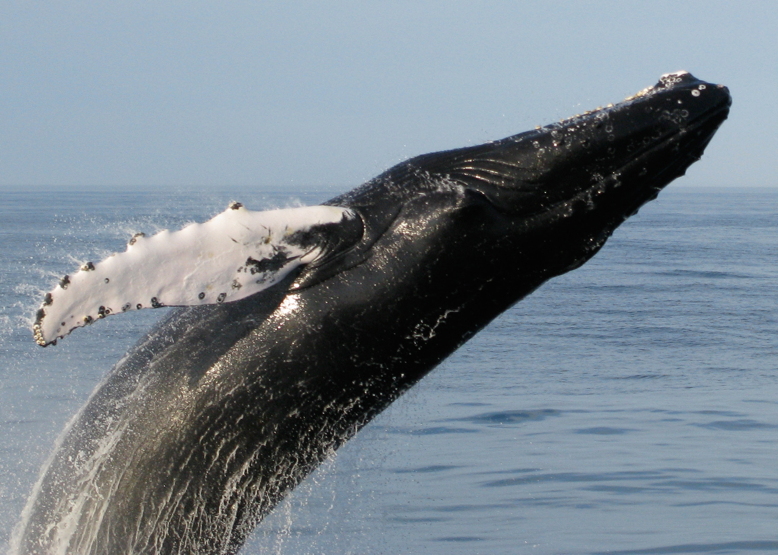
A majestic humpback whale travels along the East Coast. Photo courtesy of Flickr Creative Commons: Patrick Hawks
Humpback whales, part of the baleen family, head to the cool waters off of the Atlantic Coast in the summer to feed. These majestic creatures—currently on the state and federal endangered list—grow up to 60 feet in length and eat approximately 3,000 pounds of food a day—holy krill! According to Conserve Wildlife Foundation of New Jersey, the largest threat to these creatures is entanglement in fishing gear—so don’t discard your nets or fishing lines in any body of water, ever.
Where to spot: Humpback whales can be spotted anywhere along the Atlantic Coast from northern Monmouth County to Cumberland County along the Delaware Bay. If you want a good look, take a whalewatching tour in Cape May. These guides know the best spots to bring watchers while keeping at a safe distance so as to not harm these gentle giants.
2. Black Skimmer
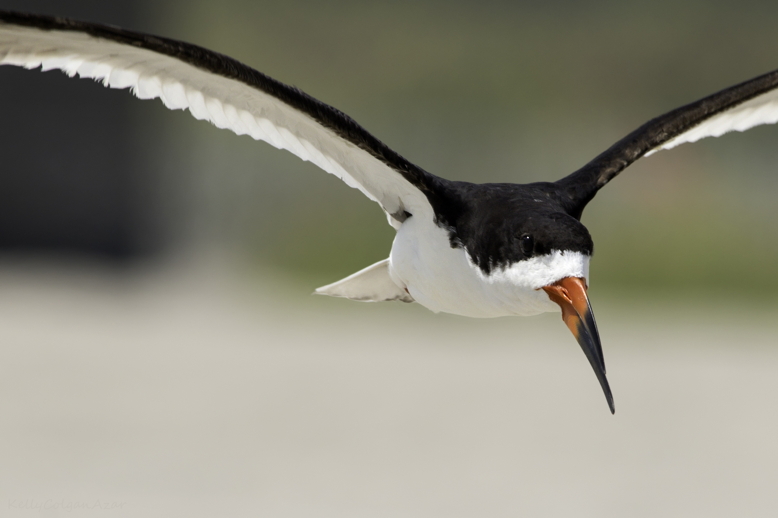
A Black Skimmer enjoying a flight in Cape May. Photo courtesy of Flickr Creative Commons: Kelly Colgan Azar.
These impressive birds winter in Mexico, the Caribbean and northern South America and migrate to southern California, the Gulf Coast and the Atlantic Coast—largely returning to nesting grounds in New Jersey—for the summer.
These snowbirds begin to arrive in April and May, and lay their “clutch” throughout the summer. Unfortunately, the black skimmer is endangered in New Jersey in part due to human disturbance as beachgoers can trample the nests built in the sand, or cause the nesting birds to flee, leaving their young susceptible to predators—so keep a safe distance and watchful eye for nests built on the ground.
Where to spot: Black skimmers live in colonies of two to several hundred from Sandy Hook to Cape May.
3. Horseshoe Crab

A horseshoe crab crawls ashore. Photo courtesy of Flickr Creative Commons: walknboston
Horseshoe crabs are thought to be approximately 400 million years old—two times older than any dinosaur that roamed the earth, according to Conserve Wildlife of New Jersey. The Garden State is extremely important to the life cycle of the Atlantic horseshoe crab as they largely live and breed in the Delaware Bay.
Although they are not considered a threatened species yet, their numbers are reportedly in “serious decline” as they are often used as bait and are utilized for research by pharmaceutical companies for their blood containing Limulus amebocyte lysate, which clots in the presence of bacteria. The decline of the horseshoe crab is believed to be affecting shore bird populations which primarily feed on their eggs during their migration.
Where to spot: Throughout the Jersey coastline with large concentrations in the Delaware Bay area.
4. Bottlenose Dolphin
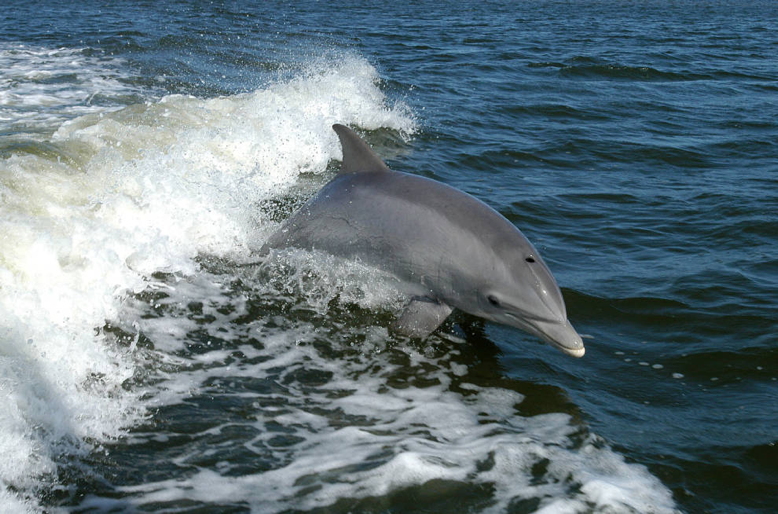
A common bottle nose dolphin leaps out of the water. Photo courtesy of Flickr Creative Commons: Federal Register.
These social creatures enjoy a dive into the waves as much as any beachgoer at the Shore. Bottlenose dolphins, who make their way towards the Garden State in the summer, usually swim up from the Carolina’s where they winter in order to feed and give birth. Males and females often travel in separate groups called pods, which can number in the hundreds.
Bottlenose numbers are currently “abundant” throughout the world with few predators other than man.
Where to spot: Although they can sometimes be seen from Shore with a keen eye (or binoculars) bottlenose dolphins can also be seen up close and personal on whale- and dolphin-watching tours off the southern coast of New Jersey.
5. Osprey

An osprey watches over its nest in North Wildwood. Photo courtesy of Flickr Creative Commons: hjhipster.
Osprey, formerly known as the “fish hawk” is a member of the raptor family which lives along the Pacific Coast from Alaska to California and the Atlantic Coast from Labrador to Florida. Females are typically larger than males, with a wingspan of up to 63 inches. Interestingly, the age of the bird can be determined by their eye color, which changes from red to orange to yellow as they mature.
Formerly endangered in New Jersey, when osprey nests reached as low as 50 nests in 1974, today the species has bounced back thanks to the installation of man-made platforms built to act as nesting sites for these birds throughout the state.
Where to spot: Along the coast from Sandy Hook to Cape May and along the Delaware Bay reaching up to Gloucester County.
6. Northern Diamondback Terrapin

A northern diamondback terrapin enjoys some sun at the Forsythe National Wildlife Refuge in Atlantic County. Photo courtesy of Flickr Creative Commons: Ellen & Tony.
Warning—turtle crossing! If you plan on traveling down “Seven Bridges Road” in Little Egg Harbor this summer, keep an eye out for terrapins crossing the road. According to the Conserve Wildlife Foundation of New Jersey, dozens of Northern Diamondback Terrapins are killed by motorists along this 4-mile stretch each year.
Native to New Jersey, the Northern Diamondback is the only terrapin in the world that can inhabit brackish water—a mix of salt and fresh water. Although a fence has been constructed along this busy summer thruway in recent years, the artery remains a prime spot for these hard-shelled critters who lay their eggs in the soft shoulders of the road—so give them a break and slow down!
Where to spot: In the brackish marshes of New Jersey—specifically along “Seven Bridges Road” or Great Bay Boulevard which runs through the Great Bay Boulevard Wildlife Management Area in Little Egg Harbor Township.
7. Sand crabs

The underbelly of an Eastern Mole Crab. Photo courtesy of Flickr Creative Commons: Ken-ichi Ueda.
Sand crabs… mole crabs… sand fleas.. whatever you may call them, these beach-loving critters are among the smallest of the crabs. Living and feeding in “swash” zones—or areas of the beach where waves break on the shore—these one-inch creatures are harmless to humans and are even eaten as a summertime snack by some.
According to Barnegat Bay Shellfish, the crabs—who can only walk backwards—burrow themselves rear-first into the sand, facing seaward, with only their eyes and first antennae left sticking out of the sand. As waves crash on the shore they filter out tiny plankton with their antennae to eat.
Where to spot: These creepy crawlers are found throughout the coast with concentrations on Island Beach State Park and Long Beach Island. If you dig into the sand to make a castle close to shore, you’re likely to spot a few.
8. Red Knot
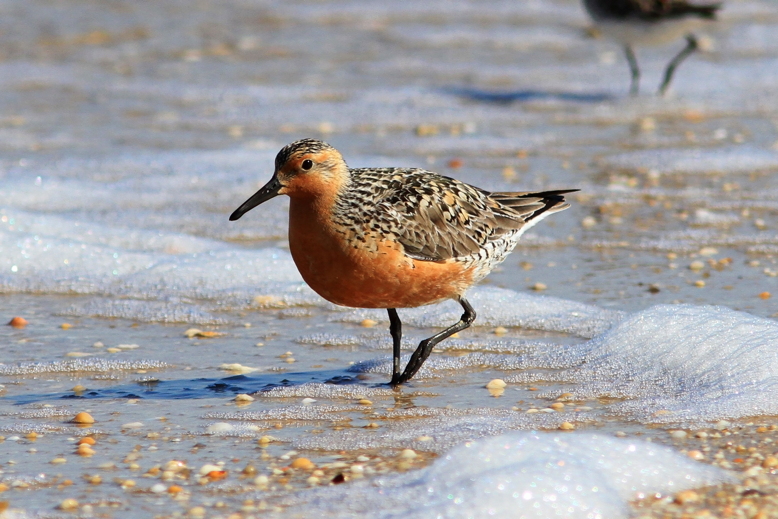
A Red Knot strolls along Cooks Beach in Cape May County. Photo courtesy of Flickr Creative Commons: Ann Marie Morrison.
Another bird on New Jersey’s endangered list, the Red Knot has one of the longest yearly migrations of any bird, traveling over 9,000 miles each year.
These impressive birds winter throughout South America and begin their migration up to the Arctic in the spring. New Jersey is an important pit-stop for a large population of Red Knots who arrive in the Delaware Bay area mid-May to refuel on horseshoe crab eggs before heading north to their summer breeding grounds.
Although Red Knot numbers in New Jersey decreased from 90,000 in the 1980s to 13,000 in 2007, conservation initiatives have shown the population is creeping back up and was around 24,000 during this May’s migratory period.
Where to spot: Red Knot’s can be spotted anywhere from northern Monmouth County down to western Cumberland County along the coast with concentrated populations in Reed’s Beach, Cook’s Beach, Norbury’s Landing and Fortrescue. The birds are only in New Jersey during their migration which occurs in May and September.
9. Harbor Seal
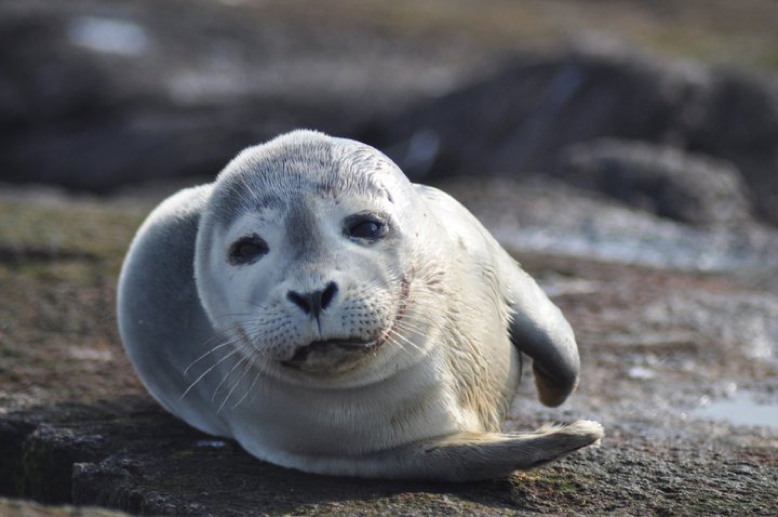
A harbor seal relaxes on an East Coast beach. Photo courtesy of Flickr Creative Commons: U.S. Fish and Wildlife Service Northeast Region.
Arguably the cutest animal on the list, Harbor Seals typically call the Jersey Shore home from November to April, though stragglers can be found throughout early and late summer.
According to Conserve Wildlife Foundation of New Jersey, the Garden State is home to the largest “haul-out” site for these seals on the Atlantic Coast, south of Eastern Long Island. Haul-outs spots are where seals choose to come ashore to rest and escape from marine predators and are extremely important to the well-being of these creatures. Though Harbor Seals are not endangered, they are federally protected and it is illegal to approach, touch, feed or harass them.
Despite their cute appearance these sea “lions” also have a dangerous bite so it’s best to observe them from a distance.
Where to spot: Harbor seals can be spotted up and down the coast, although the most popular haul-out areas in New Jersey are located in Sandy Hook, Barnegat Light and in the Great Bay area in Ocean and Atlantic Counties.
10. Seagull
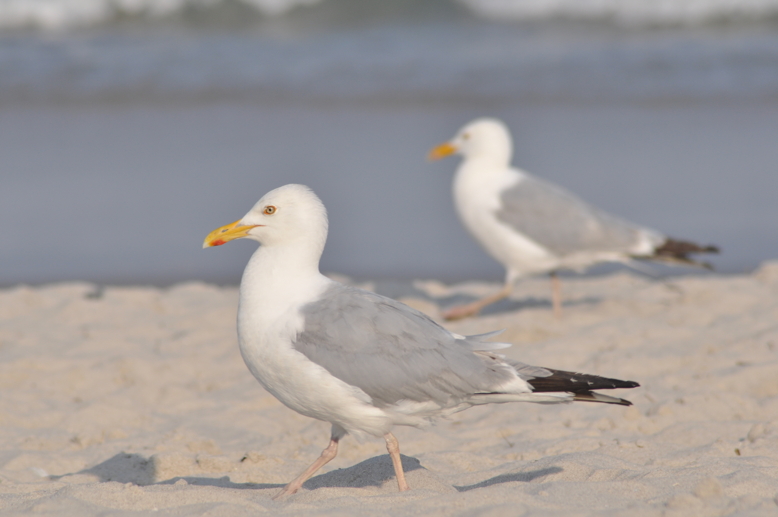
Sea gulls walking the beach in Long Beach Island. Photo courtesy of Flickr Creative Commons: Mark Yokoyama.
It wouldn’t be a trip to the Jersey Shore without a sea gull or two… or three… or a hundred. These common Shore birds, seen above, are actually named “ring-billed gulls.” According to the NJ Department of Environmental Protection, they are one of 10 species of gulls that call New Jersey home. While the ring-billed gull population is thriving and is even thought to be increasing, five species of gulls are decreasing in numbers.
Where to spot: Almost anywhere along the coast.
What Garden State critter are you looking forward to seeing this season? Let us know, below!



